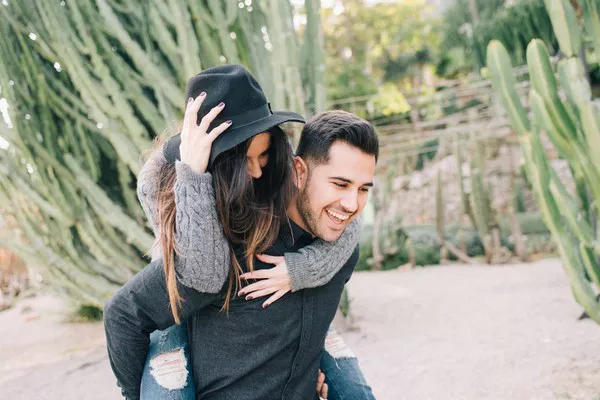Love, a profound and multifaceted emotion, forms the basis of many human connections and relationships. It is often considered a source of comfort and support, a binding force that fosters mutual understanding and care. However, the complexities of human emotions mean that love is not always synonymous with an absence of pain. This article explores the intricate interplay between love and hurt, delving into the question: Can someone love you and still hurt you?
Defining Love in Relationships
Love is a concept that encompasses a spectrum of emotions, ranging from affection and tenderness to passion and deep connection. In relationships, love serves as the foundation upon which bonds are built, providing a sense of security, acceptance, and companionship. It is a dynamic force that evolves over time, shaped by shared experiences, communication, and mutual respect. Understanding the nuances of love is essential in exploring how it can coexist with moments of hurt within the context of relationships.
Different Expressions of Love
Love manifests in various forms, each with its unique set of expressions and characteristics. The ancient Greeks identified several types of love, including Eros (romantic, passionate love), Agape (unconditional, selfless love), Philia (deep friendship), and Storge (familial love). Each type contributes to the richness of human connections, and individuals may experience a combination of these loves in different relationships. Recognizing the diversity of love allows us to appreciate that its expression may vary, influencing the potential for both joy and pain.
Communication and Misunderstandings
In the realm of love, effective communication is paramount. However, despite the best intentions, misunderstandings can occur, leading to unintentional hurt. Communication involves not only expressing love but also understanding and interpreting the expressions of our partners. When communication breaks down or misinterpretations arise, it can create emotional distress. Love, in this context, may coexist with moments of hurt caused by the gap between intention and perception.
See Also: How quickly do you fall in love?
Vulnerability in Love
Love often requires vulnerability—a willingness to open oneself emotionally to another person. Vulnerability is a double-edged sword that can enhance the depth of connections but also expose individuals to the potential for hurt. When someone loves you, they may inadvertently hurt you, not out of malice but due to the inherent vulnerability that comes with being emotionally intertwined. Acknowledging and navigating this vulnerability is crucial in understanding that love can be a source of both comfort and pain.
Past Traumas and Patterns
Individuals bring their histories into relationships, including past traumas and learned patterns of behavior. These experiences can influence how one expresses and receives love. In some instances, individuals may unintentionally replicate harmful patterns they learned earlier in life. While they may genuinely love their partners, these ingrained behaviors can lead to moments of hurt. Recognizing and addressing these patterns is essential for fostering healthier expressions of love.
External Stressors and Pressures
External factors such as work stress, financial challenges, or societal pressures can impact individuals and, consequently, their relationships. Love may coexist with hurt when external stressors spill over into interpersonal dynamics. Understanding that these stressors can influence behavior allows for empathy and compassion within the relationship. It becomes crucial to differentiate between the impact of external pressures and the core essence of the love shared between individuals.
Different Love Languages
The concept of love languages, popularized by Gary Chapman, highlights that individuals have diverse ways of expressing and receiving love. The five love languages include words of affirmation, acts of service, receiving gifts, quality time, and physical touch. When partners have different love languages, misunderstandings may arise, leading to unintentional hurt. For example, someone expressing love through acts of service may not realize that their partner values words of affirmation more. Recognizing and respecting each other’s love languages can bridge this gap.
Balancing Independence and Interdependence
Healthy relationships involve a delicate balance between independence and interdependence. While autonomy is essential, partners also rely on each other for support and connection. The challenge arises when the pursuit of independence inadvertently leads to emotional distance or perceived neglect. Love can exist in such relationships, but the sense of hurt emerges from the struggle to find equilibrium between individual needs and shared connection. Navigating this balance requires open communication and mutual understanding.
Unresolved Issues and Baggage
Individuals often carry unresolved issues and emotional baggage from past experiences into their relationships. While they may genuinely love their partners, unresolved issues can create emotional barriers, contributing to moments of hurt. Exploring these issues together and creating a safe space for vulnerability can foster healing and strengthen the foundation of love within the relationship. It is a continuous process that requires commitment and understanding from both parties.
The Role of Intention in Love
Intentions play a significant role in deciphering whether hurt within a relationship stems from malice or unintentional actions. Someone who genuinely loves you may still make mistakes or act in ways that cause pain. However, the key lies in discerning whether the actions were driven by a lack of awareness or a genuine desire to harm. Open communication allows for the clarification of intentions and facilitates healing within the relationship.
Boundaries in Love
Establishing and respecting boundaries is crucial in any relationship. Even in the context of love, individuals need to communicate their needs and limits. Hurt can arise when boundaries are unintentionally crossed, highlighting the importance of clear communication and mutual understanding. Balancing love with a respectful acknowledgment of personal boundaries ensures a healthier and more sustainable relationship dynamic.
Growth and Evolution of Love
Love is not static; it evolves and grows over time. As individuals and relationships undergo changes, love may be tested and reshaped. The journey of growth within a relationship involves adapting to new circumstances, overcoming challenges, and learning from shared experiences. While this evolution may bring moments of hurt, it also allows love to deepen and mature, fostering a resilient and enduring connection.
Coping with Hurt in Love
Acknowledging that love can coexist with hurt is an essential step in navigating the complexities of relationships. Coping strategies involve open communication, empathy, and a willingness to understand each other’s perspectives. Seeking professional guidance, such as couples therapy, can provide a structured space for addressing underlying issues and developing healthier patterns of interaction. It is essential to approach hurt within the context of love as an opportunity for growth and strengthened emotional bonds.
The Role of Forgiveness
Forgiveness is a powerful tool in healing the wounds that may arise within the realm of love. While it does not erase the hurt, forgiveness allows individuals to release resentment and move forward. Cultivating forgiveness involves understanding that everyone is fallible, capable of making mistakes despite their love for one another. Embracing forgiveness fosters a compassionate and resilient foundation for the relationship.
Conclusion
In the intricate tapestry of human emotions, love and hurt often coexist within the context of relationships. Understanding that someone can love you and still inadvertently cause pain requires a nuanced perspective on the complexities of human connections. Love is a dynamic force influenced by various factors, including communication, vulnerability, past experiences, and external stressors. Navigating the interplay between love and hurt involves open communication, empathy, and a commitment to mutual growth. Embracing the evolving nature of love, acknowledging the role of intentions, and cultivating forgiveness contribute to the resilience and enduring strength of relationships. Love’s complex dance with hurt ultimately offers an opportunity for deeper understanding, connection, and the continuous journey of emotional growth.
Related topics:


























